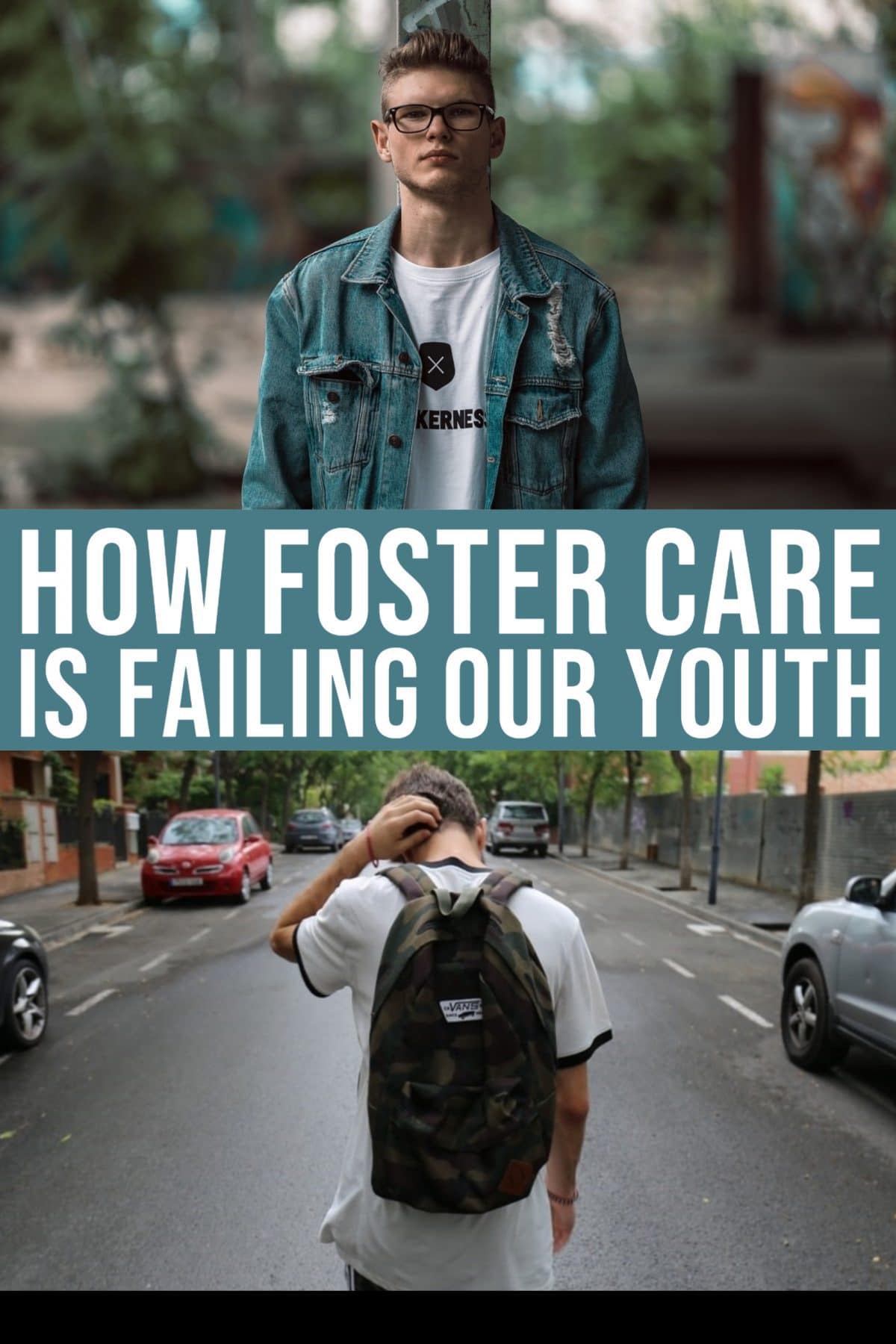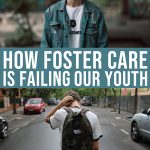Every child deserves a safe and loving home. The goal of the foster care system is to help children in unsafe environments by placing them in a temporary foster home until they can either be reunited with their biological family or placed with an adoptive family. There are currently more than 400,000 kids in the foster care system in the United States. According to the most recent Adoption and Foster Care Analysis and Reporting System Report, the average age of kids in foster care is 8 years old. The plan for 56% of those children is reunifying them with their biological parents, while for 27% the permanency plan is adoption.
While the system was created to help these children, it often does the opposite. As it currently exists, the foster care system is broken. While it does successfully reunite families and place children in safe adoptive homes, foster care also leads to high rates of homelessness, involvement in the criminal justice system, and terrible success rates for children who are raised in the foster care system.
Understanding Foster Care
To understand the problem with the foster care system, it is important to know a few things about what happens to children placed in care. While there are other outcomes for children in foster care, there are three main scenarios for a child placed in a foster home. The first is the ultimate goal of foster care – reunification. Except in extreme cases, the goal of the foster care system is to reunite children with their biological parents.

Children are usually placed in a foster home while their biological parents complete a case plan that includes appropriate support and treatment services to help address the reasons that the children were placed in a foster home. If parents successfully complete their case plan, then children are placed back with their biological parents.
The second scenario is that children are unable to return home to their biological parents and will remain in a foster home until an adoptive home can be found. There are a number of reasons why this could happen.
In some cases, if the situation is too severe a judge can decide that the children are not safe to return home and will terminate the rights of the biological parents. In other cases, parents may choose to terminate their rights voluntarily. Another common reason that children are not returned to their biological parents is that the parents are unable or unwilling to complete their case plan. In all of these cases, the children remain in foster care until they are matched with an adoptive family.
If a child cannot be reunified with their parents and an adoptive family is not found, then that child will remain in a foster home or a group home until they age out of the system. When a child “ages out of the system” that means they were unable to be placed back in the home of their biological parents, were not placed with an adoptive family, and became ineligible to remain in the system because they turned 18-21 (depending on the programs offered in the state in which they live).
Last year over 17,000 children aged out of the system. Those 17,000 children became too old to remain in a foster home within the foster care system and will be on their own without a permanent family or without any sort of formal support.
Homelessness

Approximately one-third of homeless young adults were previously in foster care. Some of these teens and young adults aged out of the system and were left without the emotional and financial support that children typically receive from their families. Others ran away from their foster home – nearly 800 children in foster care ran away in 2018.
Involvement in the Criminal Justice System
These children have been through a lot in their short lives. The trauma that children in foster care have endured by the time they reach adulthood is more than most people can imagine experiencing over the course of their entire lives. They have experienced abuse or neglect. They were taken from their parents. They were moved from foster home to foster home to live with strangers – it is common for a child entering foster care to live in four different foster homes in their first year in care. They are not emotionally or mentally equipped to deal with what they have been through.

Around a quarter of children who have been in foster care will become involved with the criminal justice system within just two years of leaving care, and as many as 70% of youth in the juvenile justice system have been in foster care. The more a child moves from foster home to foster home, the more likely they are to end up in the criminal justice system. Children who are placed in a group home rather than a foster home are also more likely to end up involved in the justice system.
By age 17, more than half of children in foster care have experienced an arrest, conviction, or an overnight stay in a correctional facility. In addition, children in a foster home are more likely than their peers to have the police called on them by their caregivers for small infractions. Being in a group home increases that likelihood.
Future Success
Kids who age out of foster care are less likely than their peers to graduate from high school. They are also less likely to attend college let alone graduate from college. The statistics change slightly from year to year, but by 26 years old, around 80% of young adults who aged out of foster care earned either a high school degree or GED compared to 94% in their peers. Only 4% of youth who aged out of foster care had earned a four-year college degree by the age of 26, while 36% of their peers had completed four-year degrees.

Seven out of 10 girls who aged out of foster care will become pregnant by the time they are 21 years old, making it harder for them to earn a degree without a support system. Just 50% of young adults who age out of the system will have some form of gainful employment by the age of 24.
If the goal of the foster care system is to give these children a fresh start in life, we are failing many of them. The solution cannot just be to remove children from their home, place them in a foster home, and then expect the problem to be fixed. Their lives are so affected by the trauma that they have and are experiencing.
These children need access to therapy and other resources for the remainder of their lives. They need the knowledge and tools that will set them up for success. Those things are not inherent. They are learned. While these children are bounced from foster home to foster home and focused on survival, they are missing out on important lessons and support that their peers are receiving. While the foster care system does a lot of good and successfully places many children in loving, permanent homes, there are still so many children being left behind and set up for failure.
WANT TO READ MORE?
Check out the article How Much Does it Cost to Adopt a Child and Other Adoption Questions Answered.

Photo Credits: Unsplash.com
Sources: AFCARS Report #26, Foster America: The Problem, Aging Out, Preventing the Movement of Children in Foster Care, What is the Foster Care-to-prison Pipeline?, 51 Useful Aging Out of Foster Care Statistics








































